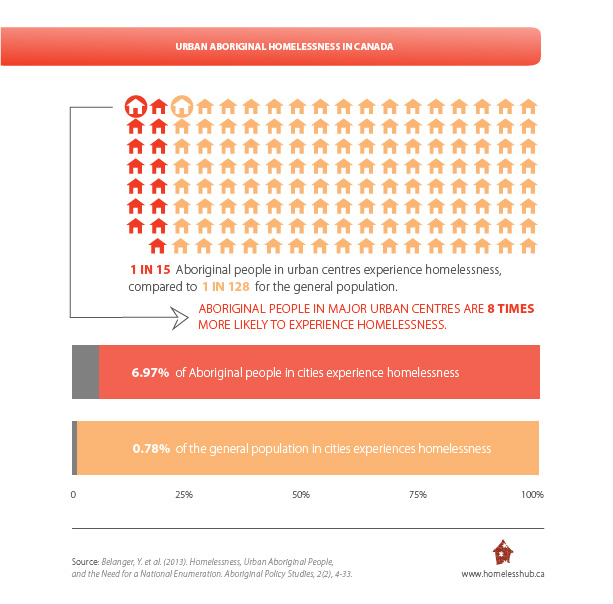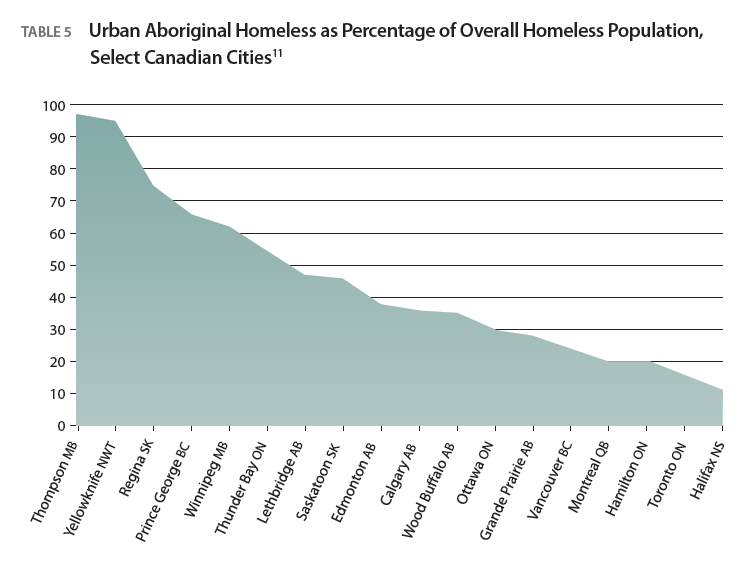Despite the extent of Aboriginal homelessness in Canada, there exists limited national and regional data enumerating Aboriginal homelessness. Of the PiT Counts that have been conducted in Canada, Aboriginal Peoples were significantly overrepresented (Calgary Homeless Foundation, 2014; Chopin & Wormith, 2008; Hanselmann, 2001; Stroick, Hubac, & Richter-Salomons, 2008). However, a cross-country enumeration of Aboriginal homelessness has never been conducted, and many Canadian PiT Counts have employed different methodologies and definitions of homelessness that potentially exclude Aboriginal people experiencing homelessness (Echenberg & Jensen, 2008; Human Resources and Skills Development Canada, 2012).
Research has shown that Aboriginal Peoples are likely to be significantly undercounted during PiT Counts. This is due to numerous factors including: their overrepresentation among hidden homeless populations (Distasio, Sylvestre, & Mulligan, 2005; Stroick et al., 2008), movement between urban communities and reserves (Belanger et al., 2013), and expressed unwillingness to participate in PiT Counts (Letkemann, 2004, p. 242; Peters & The Prince Albert Grand Council Urban Services Inc., 2009). Both the lack of data and the identified methodological challenges make it difficult to estimate national and regional statistics on Aboriginal homelessness.
While acknowledging these obstacles, Belanger and colleagues (2013) have used available data to establish an approximate rate of Aboriginal homelessness in select communities across Canada, and they found:
- The Aboriginal homeless population accounts for 29 percent of the overall homeless population in Canada
- Of the total 70,200 urban Canadians who identified as being homeless, 20,358 were found to be of Aboriginal descent
- On any given night, 6.97% of all urban Aboriginal people are homeless, compared to 0.78% of the non-Aboriginal population
- On any given night, 1 in 15 urban Aboriginal people experience homelessness, compared to 1 out of 128 non-Aboriginal people

Given that these numbers do not reflect Aboriginal people at risk of homelessness or those who are provisionally accommodated, such as couch surfers, it is anticipated that Aboriginal homelessness is significantly greater than these data indicate. Based on these trends we can conclude that Aboriginal homelessness is endemic in Canada.
Gaps in Knowledge about Aboriginal Homelessness
|
How Can a PiT Count Help Address Aboriginal Homelessness?
|

